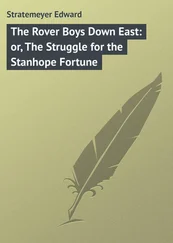Чарльз Дарвин - The Origin of Species by Means of Natural Selection Or, the Preservation of Favoured Races in the Struggle for Life
Здесь есть возможность читать онлайн «Чарльз Дарвин - The Origin of Species by Means of Natural Selection Or, the Preservation of Favoured Races in the Struggle for Life» весь текст электронной книги совершенно бесплатно (целиком полную версию без сокращений). В некоторых случаях можно слушать аудио, скачать через торрент в формате fb2 и присутствует краткое содержание. Год выпуска: 1999, Жанр: Биология, на английском языке. Описание произведения, (предисловие) а так же отзывы посетителей доступны на портале библиотеки ЛибКат.
- Название:The Origin of Species by Means of Natural Selection Or, the Preservation of Favoured Races in the Struggle for Life
- Автор:
- Жанр:
- Год:1999
- ISBN:нет данных
- Рейтинг книги:3 / 5. Голосов: 1
-
Избранное:Добавить в избранное
- Отзывы:
-
Ваша оценка:
- 60
- 1
- 2
- 3
- 4
- 5
The Origin of Species by Means of Natural Selection Or, the Preservation of Favoured Races in the Struggle for Life: краткое содержание, описание и аннотация
Предлагаем к чтению аннотацию, описание, краткое содержание или предисловие (зависит от того, что написал сам автор книги «The Origin of Species by Means of Natural Selection Or, the Preservation of Favoured Races in the Struggle for Life»). Если вы не нашли необходимую информацию о книге — напишите в комментариях, мы постараемся отыскать её.
The Origin of Species by Means of Natural Selection Or, the Preservation of Favoured Races in the Struggle for Life — читать онлайн бесплатно полную книгу (весь текст) целиком
Ниже представлен текст книги, разбитый по страницам. Система сохранения места последней прочитанной страницы, позволяет с удобством читать онлайн бесплатно книгу «The Origin of Species by Means of Natural Selection Or, the Preservation of Favoured Races in the Struggle for Life», без необходимости каждый раз заново искать на чём Вы остановились. Поставьте закладку, и сможете в любой момент перейти на страницу, на которой закончили чтение.
Интервал:
Закладка:
MAMMIFEROUS.—Having mammae or teats (see MAMMALIA).
MANDIBLES.—in insects, the first or uppermost pair of jaws, which are generally solid, horny, biting organs. In birds the term is applied to both jaws with their horny coverings. In quadrupeds the mandible is properly the lower jaw.
MARSUPIALS.—An order of Mammalia in which the young are born in a very incomplete state of development, and carried by the mother, while sucking, in a ventral pouch (marsupium), such as the kangaroos, opossums, etc. (see MAMMALIA).
MAXILLAE.—in insects, the second or lower pair of jaws, which are composed of several joints and furnished with peculiar jointed appendages called palpi, or feelers.
MELANISM.—The opposite of albinism; an undue development of colouring material in the skin and its appendages.
METAMORPHIC ROCKS.—Sedimentary rocks which have undergone alteration, generally by the action of heat, subsequently to their deposition and consolidation.
MOLLUSCA.—One of the great divisions of the animal kingdom, including those animals which have a soft body, usually furnished with a shell, and in which the nervous ganglia, or centres, present no definite general arrangement. They are generally known under the denomination of "shellfish"; the cuttle-fish, and the common snails, whelks, oysters, mussels, and cockles, may serve as examples of them.
MONOCOTYLEDONS, or MONOCOTYLEDONOUS PLANTS.—Plants in which the seed sends up only a single seed-leaf (or cotyledon); characterised by the absence of consecutive layers of wood in the stem (endogenous growth), by the veins of the leaves being generally straight, and by the parts of the flowers being generally in multiples of three. (Examples, grasses, lilies, orchids, palms, etc.)
MORAINES.—The accumulations of fragments of rock brought down by glaciers.
MORPHOLOGY.—The law of form or structure independent of function.
MYSIS-STAGE.—A stage in the development of certain crustaceans (prawns), in which they closely resemble the adults of a genus (Mysis) belonging to a slightly lower group.
NASCENT.—Commencing development.
NATATORY.—Adapted for the purpose of swimming.
NAUPLIUS-FORM.—The earliest stage in the development of many Crustacea, especially belonging to the lower groups. In this stage the animal has a short body, with indistinct indications of a division into segments, and three pairs of fringed limbs. This form of the common fresh-water CYCLOPS was described as a distinct genus under the name of NAUPLIUS.
NEURATION.—The arrangement of the veins or nervures in the wings of insects.
NEUTERS.—Imperfectly developed females of certain social insects (such as ants and bees), which perform all the labours of the community. Hence, they are also called WORKERS.
NICTITATING MEMBRANE.—A semi-transparent membrane, which can be drawn across the eye in birds and reptiles, either to moderate the effects of a strong light or to sweep particles of dust, etc., from the surface of the eye.
OCELLI.—The simple eyes or stemmata of insects, usually situated on the crown of the head between the great compound eyes.
OESOPHAGUS.—The gullet.
OOLITIC.—A great series of secondary rocks, so called from the texture of some of its members, which appear to be made up of a mass of small EGG-LIKE calcareous bodies.
OPERCULUM.—A calcareous plate employed by many Molluscae to close the aperture of their shell. The OPERCULAR VALVES of Cirripedes are those which close the aperture of the shell.
ORBIT.—The bony cavity for the reception of the eye.
ORGANISM.—An organised being, whether plant or animal.
ORTHOSPERMOUS.—A term applied to those fruits of the Umbelliferae which have the seed straight.
OSCULANT.—Forms or groups apparently intermediate between and connecting other groups are said to be osculant.
OVA.—Eggs.
OVARIUM or OVARY (in plants).—The lower part of the pistil or female organ of the flower, containing the ovules or incipient seeds; by growth after the other organs of the flower have fallen, it usually becomes converted into the fruit.
OVIGEROUS.—Egg-bearing.
OVULES (of plants).—The seeds in the earliest condition.
PACHYDERMS.—A group of Mammalia, so called from their thick skins, and including the elephant, rhinoceros, hippopotamus, etc.
PALAEOZOIC.—The oldest system of fossiliferous rocks.
PALPI.—Jointed appendages to some of the organs of the mouth in insects and Crustacea.
PAPILIONACEAE.—An order of plants (see LEGUMINOSAE), The flowers of these plants are called PAPILIONACEOUS, or butterfly-like, from the fancied resemblance of the expanded superior petals to the wings of a butterfly.
PARASITE.—An animal or plant living upon or in, and at the expense of, another organism.
PARTHENOGENESIS.—The production of living organisms from unimpregnated eggs or seeds.
PEDUNCULATED.—Supported upon a stem or stalk. The pedunculated oak has its acorns borne upon a footstool.
PELORIA or PELORISM.—The appearance of regularity of structure in the flowers of plants which normally bear irregular flowers.
PELVIS.—The bony arch to which the hind limbs of vertebrate animals are articulated.
PETALS.—The leaves of the corolla, or second circle of organs in a flower. They are usually of delicate texture and brightly coloured.
PHYLLODINEOUS.—Having flattened, leaf-like twigs or leafstalks instead of true leaves.
PIGMENT.—The colouring material produced generally in the superficial parts of animals. The cells secreting it are called PIGMENT-CELLS.
PINNATE.—Bearing leaflets on each side of a central stalk.
PISTILS.—The female organs of a flower, which occupy a position in the centre of the other floral organs. The pistil is generally divisible into the ovary or germen, the style and the stigma.
PLACENTALIA, PLACENTATA.—or PLACENTAL MAMMALS, See MAMMALIA.
PLANTIGRADES.—Quadrupeds which walk upon the whole sole of the foot, like the bears.
PLASTIC.—Readily capable of change.
PLEISTOCENE PERIOD.—The latest portion of the Tertiary epoch.
PLUMULE (in plants).—The minute bud between the seed-leaves of newly-germinated plants.
PLUTONIC ROCKS.—Rocks supposed to have been produced by igneous action in the depths of the earth.
POLLEN.—The male element in flowering plants; usually a fine dust produced by the anthers, which, by contact with the stigma effects the fecundation of the seeds. This impregnation is brought about by means of tubes (POLLEN-TUBES) which issue from the pollen-grains adhering to the stigma, and penetrate through the tissues until they reach the ovary.
POLYANDROUS (flowers).—Flowers having many stamens.
POLYGAMOUS PLANTS.—Plants in which some flowers are unisexual and others hermaphrodite. The unisexual (male and female) flowers, may be on the same or on different plants.
POLYMORPHIC.—Presenting many forms.
POLYZOARY.—The common structure formed by the cells of the Polyzoa, such as the well-known seamats.
PREHENSILE.—Capable of grasping.
PREPOTENT.—Having a superiority of power.
PRIMARIES.—The feathers forming the tip of the wing of a bird, and inserted upon that part which represents the hand of man.
PROCESSES.—Projecting portions of bones, usually for the attachment of muscles, ligaments, etc.
PROPOLIS.—A resinous material collected by the hivebees from the opening buds of various trees.
PROTEAN.—Exceedingly variable.
PROTOZOA.—The lowest great division of the animal kingdom. These animals are composed of a gelatinous material, and show scarcely any trace of distinct organs. The Infusoria, Foraminifera, and sponges, with some other forms, belong to this division.
PUPA (pl. PUPAE).—The second stage in the development of an insect, from which it emerges in the perfect (winged) reproductive form. In most insects the PUPAL STAGE is passed in perfect repose. The CHRYSALIS is the pupal state of butterflies.
Читать дальшеИнтервал:
Закладка:
Похожие книги на «The Origin of Species by Means of Natural Selection Or, the Preservation of Favoured Races in the Struggle for Life»
Представляем Вашему вниманию похожие книги на «The Origin of Species by Means of Natural Selection Or, the Preservation of Favoured Races in the Struggle for Life» списком для выбора. Мы отобрали схожую по названию и смыслу литературу в надежде предоставить читателям больше вариантов отыскать новые, интересные, ещё непрочитанные произведения.
Обсуждение, отзывы о книге «The Origin of Species by Means of Natural Selection Or, the Preservation of Favoured Races in the Struggle for Life» и просто собственные мнения читателей. Оставьте ваши комментарии, напишите, что Вы думаете о произведении, его смысле или главных героях. Укажите что конкретно понравилось, а что нет, и почему Вы так считаете.












